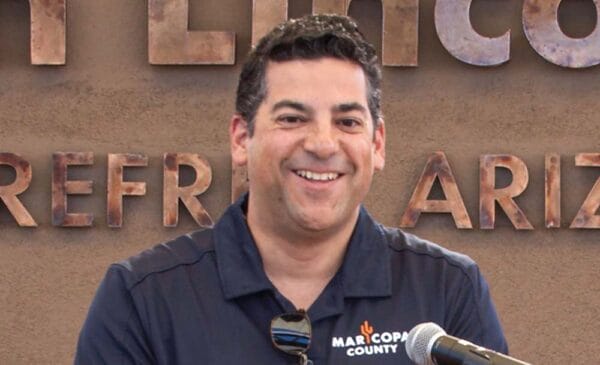
FOR IMMEDIATE RELEASE
June 1, 2020
The Monday Morning Quarterback
A quick analysis of important economic data released over the last week
More random thoughts.
As time goes by, we are getting more and better information on Covid-19. For example, the CDC recently came out with a report that shows the current best estimate on the overall infection fatality rate (IFR) of the disease. The overall death rate is now estimated to be much lower than earlier estimates. The overall rate is 4/10th of 1%. But, adjusting for asymptomatic cases, the overall rate is 26/100th of 1%. Yet, the overall death rate is really meaningless because the numbers are so slanted to the higher end of the age spectrum. By age group, some of the numbers are remarkably low. In the 0-49 age group, the number is 5/100th of 1%. In the 50-64 age group, it is 2/10th of 1%. In the 65 plus age group, it is 1.3%.
But, even there, other information suggests that it is age plus a compromised immune system that are the culprits. For example, nursing homes and assisted living facilities account for 6/10th of 1% of where the U.S. population is housed. Yet, these facilities account for 42% of all Covid-19 deaths. The number is 50% outside of New York. If there is an adjustment for the fact that New York counts as hospital deaths people who were living in nursing homes and assisted living facilities just before being sent to the hospital, the national number would be 50% of all Covid-19 deaths, not 42%. Think of that. Half of all Covid-19 deaths are accounted for by 6/10th of 1% of the population. That really means that the rest of the population. (especially under 65) is far safer than originally thought.
There is also information surfacing that various states are accounting for some of the data differently. That may be true. But, there is little that suggests the overall death rate in total or by age would change very much.
As for economic data, the impact of the stay at home orders on the economy is becoming clearer. It is not a happy picture. Despite the slow but steady opening of the economies of states across the country, the initial results have been tepid at best. As mentioned last week, George Hammond of the University of Arizona’s Forecasting Project has compiled some good information that paints a weekly picture of events usually not tracked. Overall, visits to workplaces, retail and recreation venues in Arizona have begun to slowly recover from the April lows but still remain well below year earlier levels. The latest data available is for the week ending May 16th. It shows that visits to the workplace are down 36.1% from a year ago in Maricopa County and down 35.7% from a year ago in Pima County. Retail and recreational place trips were down 27.3% and 28.4% respectively in the two counties.
For restaurants, seated diners were down 76.1% compared to a year ago in Greater Phoenix. Hotel occupancy for the U.S. as a whole (week ending May 23) increased to 35.4% compared to 32.4% for the week of May 16. But, the occupancy rate is 50% below year earlier levels. For the week of May 16, 2020, it was down 52.6%. The same general trend exists in the TSA traveler throughput numbers. Those numbers were down 91.3% from a year ago for the week ending May 16. For the week of May 23 (the latest date available) they were down 89.1%. Improvement-yes. Major improvement-no. No “V” shaped recovery here. Data from Sky Harbor shows a year over year decline in activity of 93%.
There are other structural issues that will keep the national recovery from being fast. Consumers will be slow to readjust even if there were to be a vaccine soon. Since it appears there won’t be, this will push things out. Even a treatment that would slow or mitigate the impact of the disease would be helpful. But, consumers will remain cautious for quite a while. Movie? Travel? Crowded venues like sports, concerts, trade shows or meeting of trade associations? Probably not. How about something as prosaic as a nice dinner out? Buying more clothing? How many of you are hooked on workout clothes and sweats? How about less spent on gas because many will continue to work from home? And how quickly will the unemployment rate (probably around 20% now) return to the 3%+ level that existed in February? Will those still unemployed spend much? How about those who slipped through the cracks in the CARES Act? Will congress correct or continue the incentives not to work? Will consumers feel like they need more cash in the bank going forward than they did in the past? (The current savings rate is about 33% as opposed to 8.2% in February).
Will there be more unintended consequences of government actions? For example, the 4.75 million people who have taken advantage of Fannie and Freddie mortgage payment forbearance have created an environment where the spread between treasuries and mortgage rates are higher than historic norms. Also, where mortgage lenders are demanding higher FICO scores and/or down payments and making it tough to do cash-out refi’s. It makes it tough to get a jumbo loan. This will push some potential home buyers out of the housing market at a time when it can use all the demand it can get. And congress has yet to address Fannie and Freddie pre-pandemic policies of not guaranteeing a new loan to anyone who sought forbearance effectively barring those people from refinancing.
But wait!! There’s more!! When asked why he robbed banks, Willie Sutton, the notorious 1930’s bank robber simply said, “because that’s where the money is.” Well put. The money today is in the hands of baby boomers and some early Gen-Xers. The latest released Survey of Consumer Finance (2016) showed that those over age 75 had the greatest median net worth. The top three groups include 55 to 64, 65 to 74 and over 75. Ages 45 to 54 used to be close behind the older groups in terms of assets. Now they are closer to those who are 35-44. There is a big spread between those 55+ and -55. The reason for the spread is that older Americans own their homes as well as stocks and bonds.
In terms of income, 45-54 year-olds lead the way followed by 35-44 and 55-64. 65-74 is next followed by less than 35 and 75 or older. The reason for this is that many in their 50’s, 60’s and 70’s retire and live off their savings. If you are not earning more at work or your investments tank, it’s hard to spend more. This is why discretionary spending can be turned on and off so easily.
People tend to buy different things at different stages of life. Younger people spend on apartments. Young parents spend on baby food and goodies for their kids as well as household goods. Empty nesters and retirees spend on travel, hotels, air fares, cruises, leisure and other discretionary goodies. When will they be spending on those items again? How about a nice cruise for those in their 60’s or 70’s? Maybe not soon. So, those with the most money to spend will be reluctant to spend it. As we pointed out above, this group, especially those with compromised immune systems, will continue to vulnerable to Covid-19 until a cure is found. But, it’s more than just the spending on the cruise.
People spend money to get to the port they will leave from. They may stay in a hotel before they embark and after the cruise. They will spend on food and drink, tour cities and maybe stop to see friends of relatives after the trip. The ships and crew require supplies and pay port fees. So, the ripple effect as cruises are cancelled or occupancy is low is large. Now do the same for hotels, bus tours, concerts, plays, sporting events, taking the kids to Disneyland or the beach or flying to Cousin Izzy’s wedding, or that trip to Italy you’ve been waiting your entire life for. The point is that one man’s spending is another man’s income. So, if Boomers spend less…. well, you get the picture.
And all of this assumes that congress somehow puts politics aside in this contentious election season and passes another spending bill that keeps money flowing to those most vulnerable.
Look at what industries are most sensitive to social distancing and who they employ. Lodging, food service, retail, maintenance and repair, cleaning services, all types of transportation, travel and all the industries that service these industries will be affected. Industries that need social distancing to work in today’s world employ a disproportionate number of less educated and minority workers due to the nature of the skills required. They will continue to suffer from the economic consequences of social distancing because of capacity level limits. Hopefully, the government will make sure that these people do not fall through the cracks yet have the proper incentives to work. Sometimes congress forgets that a fact of life is that work is not always fun. It is not about enjoyment. It is about the need to earn green pieces of paper that you can trade for things you either need or want. People will generally take the highest paying job they can get given their skill levels and moral compass. Congress should never again pass into law incentives to sit on the couch and watch Netflix all day.
It also assumes that the effect of the 25-30% of businesses that existed prior to the closure of non-essential parts of the economy that won’t reopen and that supply chain issues created by what has happened can both be remedied relatively quickly.
I’m not a negative person. I have great faith in free markets to best solve most issues. But, it has a lot to chew on over the next few months. That’s simply the reality. There are a significant number of positives. Those who remained employed during the shutdown have probably a good deal of cash. Most of those laid-off got enough to replace their salaries. There is a lot of pent up demand. There is aa great deal of fiscal and monetary stimulus.
So for those who fell through the cracks, they will have a hard time participating in the rebound. Hopefully, Congress remedies that situation. So, hang in there. If you’re under 55, live your life. If you’re over 55, be careful. But, life must go on. Enjoy yourself to the fullest extent that the risks you face will allow.
U.S. Snapshot:
- Initial claims for unemployment insurance are increasing at a decreasing rate. But, they are still very high. For the week of May 23rd, 2,123,000 initial claims were filed. The previous week, 2,446,000 claims were filed. The May 23rd week numbers were up 874% from a year ago. Since the week of March 21, 40,767,000 initial claims have been filed. The outlook for initial claims remains poor.
- Fiscal stimulus significantly boosted personal income in April and more than offset the impacts of the pandemic. Personal income in April was up 10.5% from March and 11.7% from a year ago. Disposable personal income rose 12.9% from March and 14.4% from a year ago and personal consumption expenditures, limited by stay at home orders, were down 13.6% from March and 16.9% from a year ago. The national savings rate in April was 33% compared to 12.7% in March and 8.4% a year ago.
- The Conference Board’s Consumer Confidence Index stabilized in May after posting a record monthly decline in April. The index inched up from 85.7 in April to 86.6 in May. A year ago, the index was 131.3.
- The University of Michigan Consumer Sentiment Index also inched up on May to 72.3. That’s slightly up from 71.8 in April and 100.0 a year ago.
- Durable goods orders in April were down 29.3% from a year ago. Adjusting for defense goods and aircraft orders, new orders were down 6.3%.
- New home single family home sales in April were 623,000 at an annual rate. This compares to 619,000 at an annual rate in March and 664,000 a year ago. Builders did a lot better than existing homeowners.
Arizona Snapshot:
- Initial claims for unemployment insurance in Arizona also increased at a decreasing rate. 26,868 initial claims were filed for the week of May 23rd. This is down slightly from 31,957 filed the week of May 16th. It is still up 551% from year earlier levels and since the week of March 21st, 607,703 initial claims were filed in the state. This compares to an employment level of 2,981,100 in March.
- Statewide lodging performance took the full brunt of the effect of Covid-19 on tourism in April. Occupancy levels in April were 24.8%. It was down from 73.8% a year ago and 47.9% in March. Demand was down 69.4% from a year ago and supply was down 8.9% from a year ago as some hotels simply closed their doors.
- As with hotels, April showed the full effect that the closure of much of the economy and the scare of Covid-19 had on air travel. Enplanements in April at Phoenix Sky Harbor International Airport were 145,368. That was down 92.9% from year earlier levels. Deplanements were 136,875 for the month. That’s down 93.0% from year earlier levels.
About EDPCo
Elliott D. Pollack & Company (EDPCo) offers a broad range of economic and real estate consulting services backed by one of the most comprehensive databases found in the nation. This information makes it possible for the firm to conduct economic forecasting, develop economic impact studies and prepare demographic analyses and forecasts. Econometric modeling and economic development analysis and planning are also part of our capabilities. EDPCo staff includes professionals with backgrounds in economics, urban planning, financial analysis, real estate development and government. These professionals serve a broad client base of both public and private sector entities that range from school districts and utility companies to law firms and real estate developers.
For more information, contact –
Elliott D. Pollack & Company
5111 N. Scottsdale Rd, Suite 202,
Scottsdale, AZ 85250
480-423-9200 Website | Twitter | Facebook











